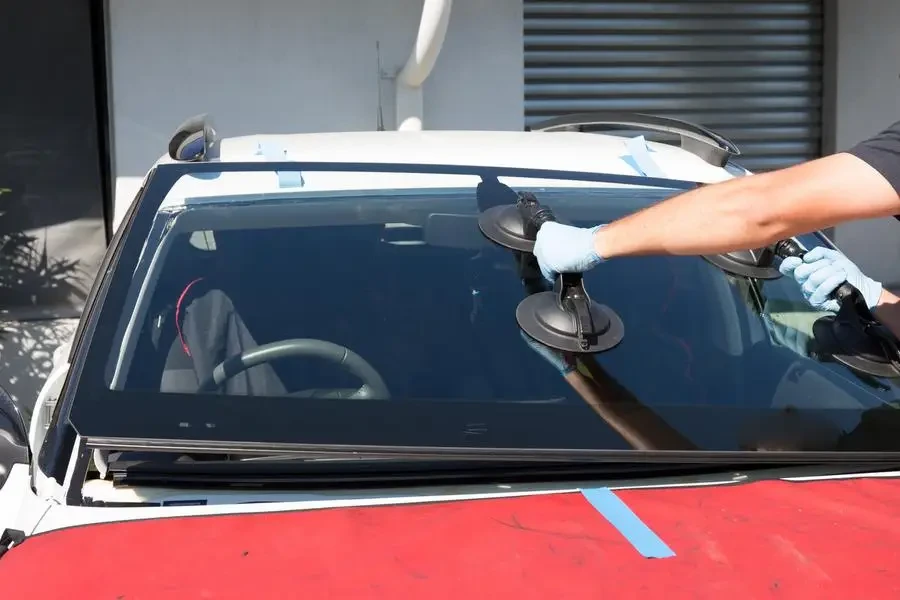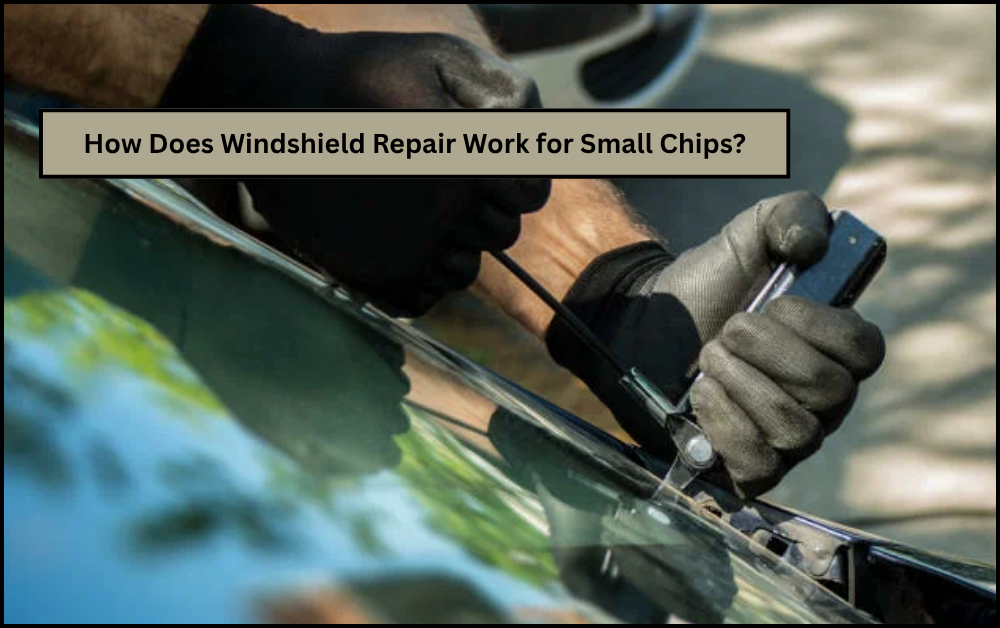How Does Windshield Repair Work for Small Chips?
The windshield of your vehicle is not just a protective barrier against the elements; it is also an integral part of the car’s structural integrity. Even a small chip can develop into a major crack if ignored, leading to a costly replacement instead of a simple repair. Understanding how windshield repair works for small chips can help car owners take quick and effective action to avoid bigger problems. This article offers an in-depth look at the process, benefits, limitations, and professional techniques involved in windshield chip repair.
Understanding Windshield Chips
A windshield chip is a small area of damage caused by the impact of debris, usually small stones, on the glass surface. These chips can vary in shape and size and are classified based on their appearance and depth. Common types include bullseye, star break, combination break, and surface pit.
While these chips may seem minor at first glance, they can compromise the clarity of the windshield and weaken its strength over time. Temperature changes, pressure, and vibrations can cause a chip to expand into a long crack, necessitating a full windshield replacement.
The Importance of Immediate Repair
Many vehicle owners underestimate the seriousness of a chip and delay getting it repaired. However, small chips should be repaired promptly for several reasons:
- Prevention of crack expansion: A repaired chip is less likely to spread.
- Cost savings: Repairing is significantly cheaper than replacing an entire windshield.
- Safety: The windshield contributes to the structural safety of a vehicle, especially in a rollover.
- Clear visibility: Chips can obstruct the driver’s line of vision, posing a safety hazard.
Repairing a chip as soon as it appears can be a simple and quick process when done professionally.
Assessing the Chip Damage
Before beginning any repair work, professionals first assess whether the chip is suitable for repair. Factors taken into account include:
- Size: Generally, chips smaller than a quarter (around 1 inch in diameter) can be repaired.
- Depth: If the damage penetrates only the outer layer of glass, repair is possible. Deeper damage might require replacement.
- Location: Chips located directly in the driver’s line of sight or at the edges of the windshield are often more challenging to repair effectively.
- Type of damage: Certain chip shapes are easier to fix, while others (like combination breaks) may require more effort or might not be suitable for repair.
Once these factors are evaluated, a professional can determine if repair is the right solution.
Note:- Windshield repair was carried out efficiently after the glass suffered minor damage from road debris. The cracks were sealed, avoiding a costly replacement. No more distractions while driving. Don’t wait until it gets worse – reach out to Windmaster now for a quick and affordable repair.
Tools and Materials Used in Windshield Repair
Professional windshield repair relies on a range of specialized tools and materials designed to restore the strength and clarity of the glass. These include:
- Resin: A specially formulated transparent resin that fills in the chip.
- Bridge and injector tool: A device that creates a vacuum to remove air and inject resin into the damaged area.
- Curing light: Usually an ultraviolet (UV) light used to harden the resin quickly.
- Polishing compound: Applied at the end to smooth the repaired surface and improve clarity.
Quality materials and tools play a crucial role in achieving an effective and long-lasting repair.
The Step-by-Step Repair Process
Cleaning the Damaged Area
The first step in any windshield chip repair is thoroughly cleaning the damaged area. Any dust, debris, or moisture inside the chip can prevent the resin from bonding properly. A technician will use a razor blade or other cleaning tool to prepare the surface.
Setting Up the Repair Tool
A bridge and injector device is placed directly over the chip. This tool is designed to create a vacuum seal around the chip and draw out air trapped inside the glass layers.
Injecting the Resin
Once the vacuum is established, the technician injects the resin into the chip. The resin is drawn into the fine cracks and crevices, filling the entire damaged area. This process may be repeated several times to ensure that the chip is completely saturated.
Curing the Resin
After the chip is filled with resin, it needs to be cured or hardened. This is done using an ultraviolet (UV) curing light, which typically takes a few minutes. The cured resin bonds the glass together, restoring its strength and preventing further cracking.
Removing Excess Resin and Polishing
The final step involves scraping off any excess resin and applying a polishing compound to the surface. This restores the smoothness of the glass and improves visibility. When done correctly, the repaired area is often barely visible.

Benefits of Professional Windshield Chip Repair
There are numerous benefits to having a small chip repaired by a trained professional rather than attempting a DIY fix:
- Expert assessment: A professional can determine whether a chip is repairable or requires replacement.
- Quality materials: Professional-grade resins and tools ensure a better, longer-lasting result.
- Structural integrity: A proper repair restores the strength of the windshield, enhancing overall vehicle safety.
- Time efficiency: Most chip repairs take less than 30 minutes.
- Cost-effectiveness: Insurance often covers chip repair with no deductible.
Limitations of Windshield Chip Repair
Despite its effectiveness, windshield chip repair does have some limitations:
- Not suitable for all damage: Large cracks or chips at the edges of the glass may not be repairable.
- Slight visibility: While repairs greatly improve appearance, some marks may remain faintly visible.
- Weakened prior repairs: Chips that have already been improperly repaired may not be fixable again.
- Multiple chips: If a windshield has several chips or extensive damage, replacement may be the safer choice.
Understanding these limitations helps manage expectations and guides you to make the right decision.
DIY Repair Kits vs Professional Service
DIY windshield repair kits are widely available, but they are not a perfect substitute for professional services. These kits can be convenient, but they come with risks:
- Limited quality: The resin and tools in DIY kits are often of lower quality than professional-grade products.
- User error: Without training, it’s easy to underfill the chip, introduce bubbles, or leave residue.
- No warranty: Professional repairs typically come with a warranty or guarantee.
- Irreversible mistakes: A poorly executed DIY job can ruin the chip and make it unrepairable.
For safety and peace of mind, it is usually best to trust experienced professionals for windshield chip repairs.
When Replacement Is Necessary
While small chips are often repairable, some situations warrant a full windshield replacement:
- Damage larger than a coin or cracks longer than a few inches.
- Chips that penetrate all layers of laminated glass.
- Multiple chips close together weakening the glass structure.
- Damage near the windshield’s edge, which compromises the frame’s strength.
- Poor visibility due to the chip being directly in the driver’s line of sight.
Technicians will guide vehicle owners based on best practices and safety guidelines.
Cost and Insurance Coverage
The cost of windshield chip repair is relatively low, often ranging between $50 and $100, depending on the location and provider. However, most auto insurance policies cover chip repair, especially if you have comprehensive coverage.
In many cases, insurance companies waive the deductible for minor repairs because it is less costly than paying for a full replacement later. It’s advisable to check your policy or contact your insurance agent for details.
Maintaining Your Windshield Post-Repair
After a windshield chip has been repaired, there are a few precautions you should take:
- Avoid high-pressure car washes for at least 24 hours after the repair.
- Don’t slam car doors, as this can cause pressure that may affect newly repaired chips.
- Monitor the area for any signs of spreading or further damage.
- Drive with care on gravel roads or behind construction trucks to minimize the chance of new chips.
With proper care, a professional chip repair can extend the life of your windshield and keep it in excellent condition.
Conclusion
Understanding how windshield repair works for small chips can save you time, money, and stress. Prompt action is key — the sooner a chip is repaired, the better the outcome. Professional repair restores strength, improves visibility, and prevents the damage from worsening.
If your vehicle has a chipped windshield, don’t delay. Visit a trusted windshield repair professional, get the damage assessed, and ensure your safety on the road. Taking care of a small issue today can prevent a major problem tomorrow.
For More Insightful Articles Related To This Topic, Feel Free To Visit: Thebizmagazine

